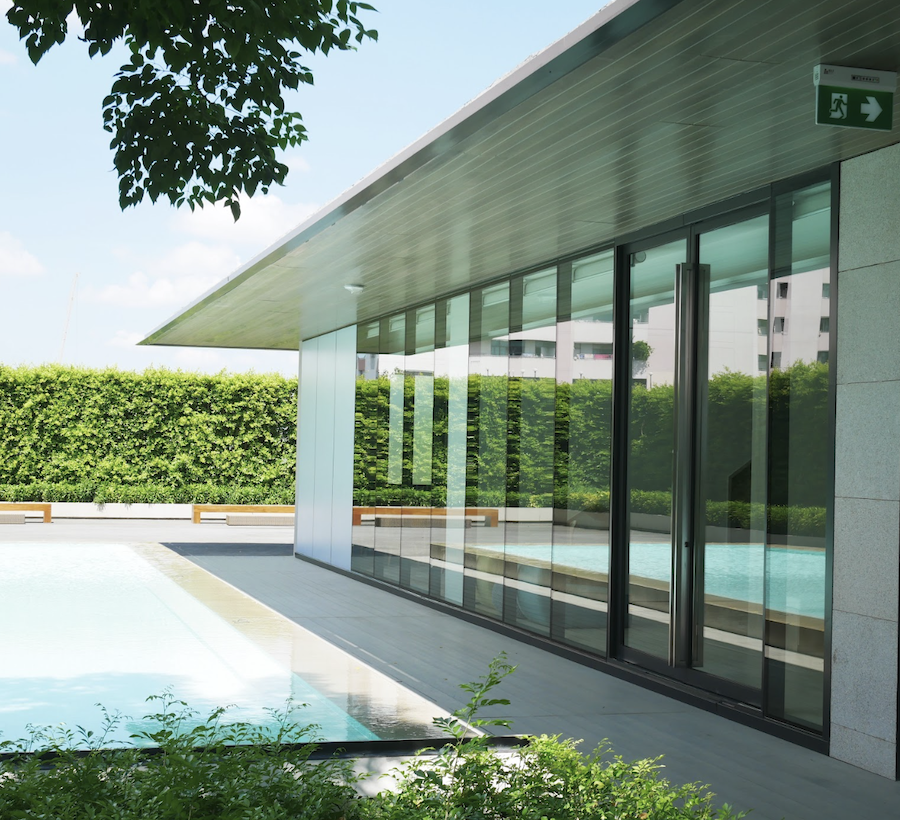What is Curtain Wall ?
A Curtain Wall is a modern façade system that serves as the external skin of a building, designed to protect, insulate, and enhance its appearance. Unlike traditional concrete or brick walls, a curtain wall does not carry any structural load of the building — instead, it is supported by the main structure, such as the slabs or columns, through a series of brackets and anchors.
Made primarily from aluminium framing and glass panels, curtain walls are lightweight yet highly durable. They act as a barrier against environmental factors like wind, rain, and temperature variations, while still allowing natural daylight to penetrate deep into interior spaces. This combination of strength, transparency, and performance makes the curtain wall one of the most essential elements of contemporary architecture.
Main Components of a Curtain Wall
A typical curtain wall consists of:
- Aluminium Frames: Provide structural support and form the framework for the glazing units.
- Glass Panels or Other Infill Materials: These can be clear, tinted, laminated, or insulated glass units (IGU) depending on the design requirements.
- Gaskets and Sealants: Ensure water tightness and air tightness between the joints.
- Thermal Breaks: Reduce heat transfer through aluminium profiles, improving thermal insulation.
- Anchors and Brackets: Secure the system to the building’s main structure.
Types of Curtain Wall Systems
- Stick System:
The curtain wall is fabricated and assembled piece by piece on site. This system offers flexibility and is suitable for mid-rise buildings where installation time is less critical. - Unitized System:
Prefabricated panels are manufactured in the factory under controlled conditions and delivered to site for installation. This system provides higher precision, faster installation, and better overall quality control — ideal for high-rise buildings and large-scale projects.
Benefits of a Curtain Wall System
- Energy Efficiency: Curtain walls help control heat gain and loss, improving indoor comfort and reducing energy consumption for air conditioning.
- Natural Light: The transparency of glass allows daylight to enter, reducing the need for artificial lighting.
- Weather Protection: The system acts as a shield against rain, wind, dust, and temperature changes.
- Aesthetic Appeal: Sleek lines and reflective surfaces create a modern, elegant appearance suitable for corporate and commercial architecture.
- Acoustic and Thermal Insulation: With proper glass configuration and thermal breaks, curtain walls provide excellent sound and temperature control.
Curtain Wall by Oregon Aluminium
At Oregon Aluminium, we specialize in fabricating, and installing high-performance curtain wall systems that comply with international standards such as EN, ASTM, and AAMA.
Our systems are tested for air permeability, water tightness, wind load resistance, and thermal performance — ensuring durability, precision, and long-term reliability.
We work closely with architects, engineers, and contractors to achieve both functional performance and architectural excellence, making each project a perfect blend of engineering integrity and visual harmony.
